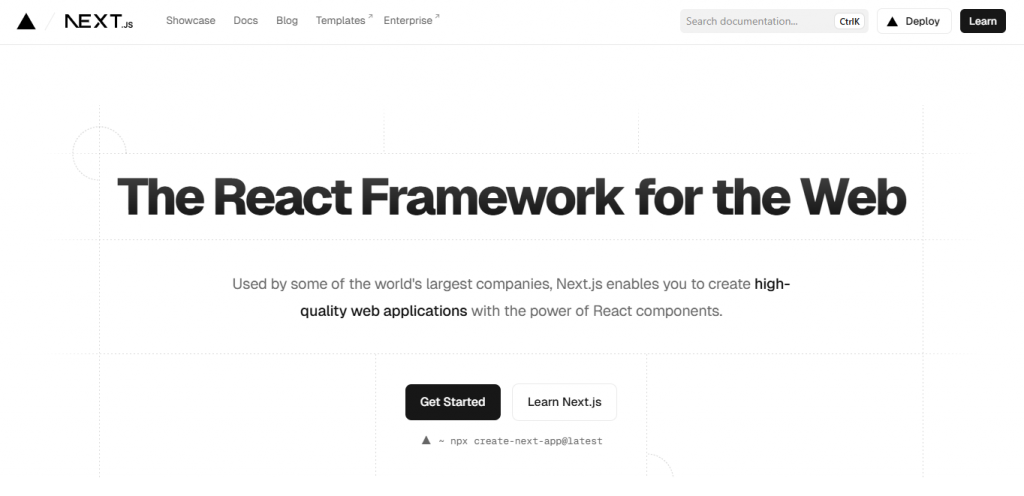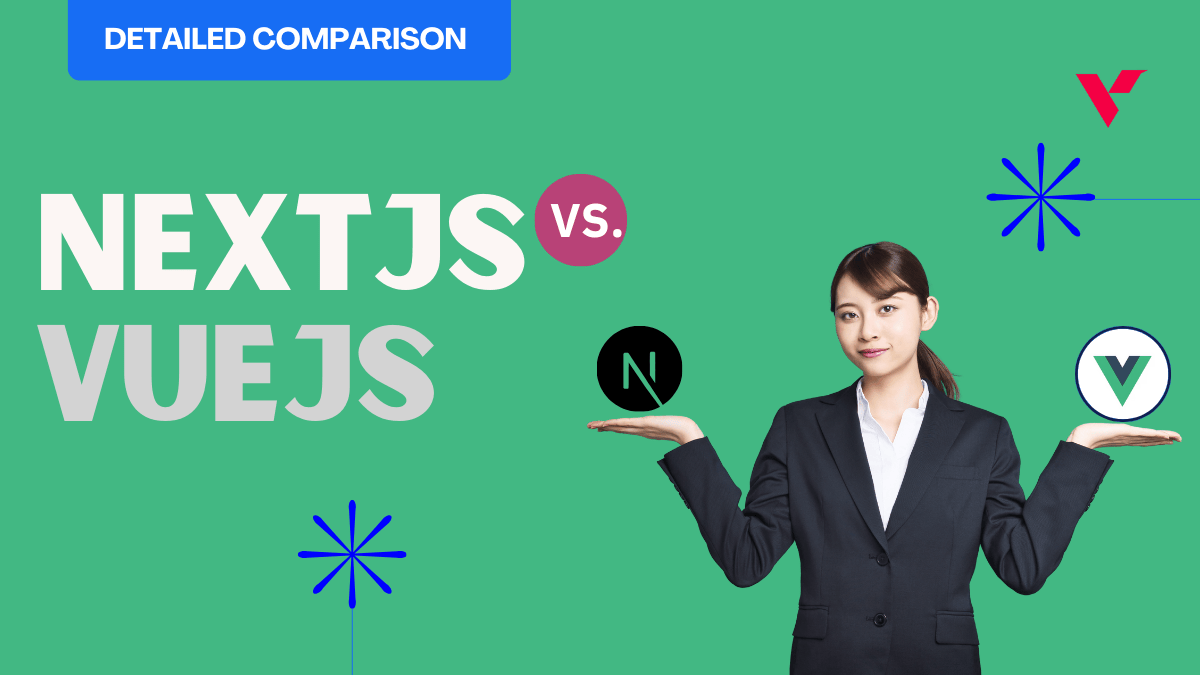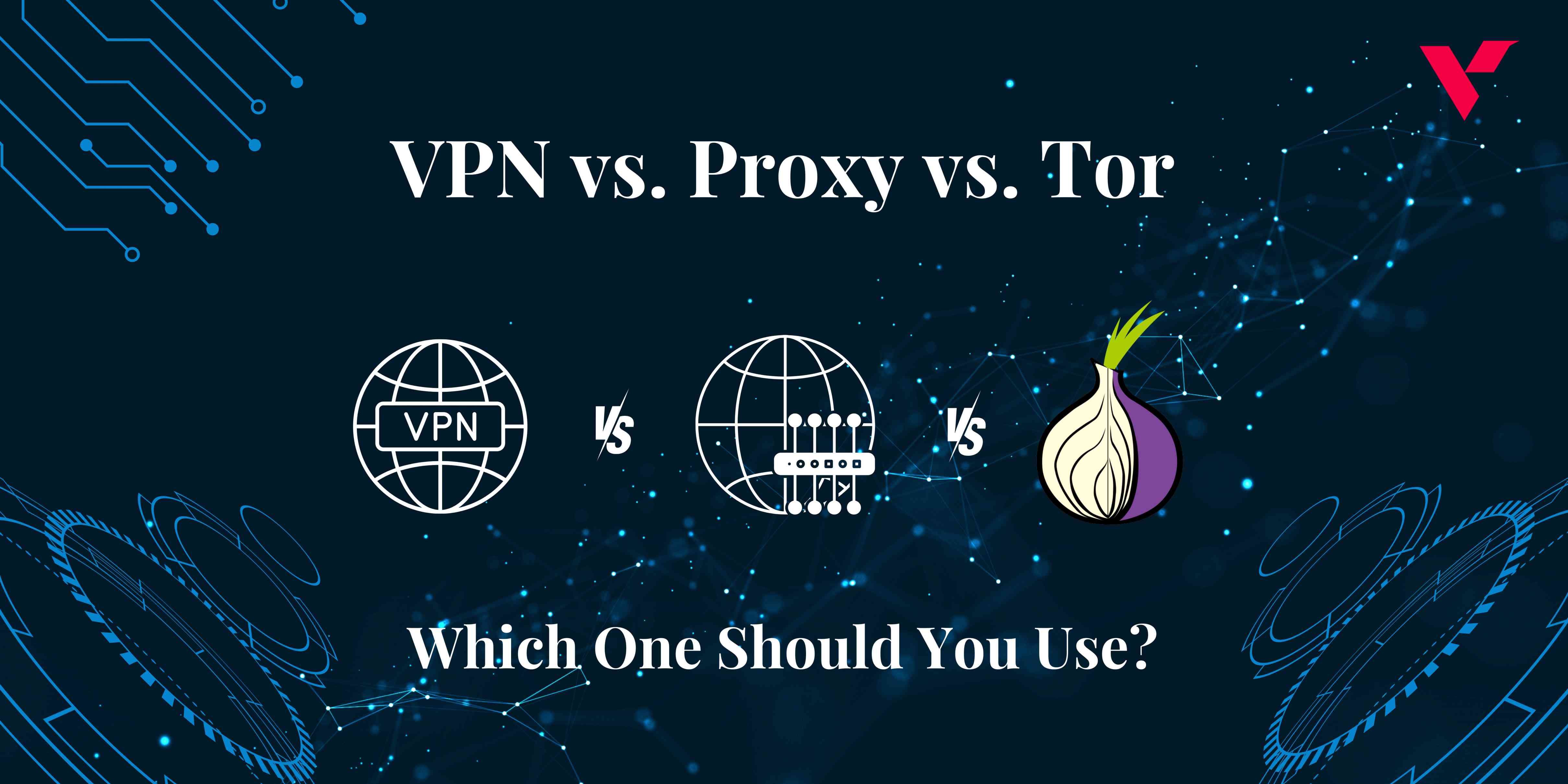Popular Tools by VOCSO
NextJS and VueJS are two of the most popular tools in modern web development, each bringing unique strengths to the table. While NextJS leverages React’s robust ecosystem for server-side rendering and static site generation, VueJS shines for its simplicity, flexibility, and ease of integration. Understanding the core aspects of each can help developers choose the best fit for their specific project needs. We will look into the NextJS vs VueJS for Full Stack Development to know about the best framework based on requirements.
NextJS is often selected for large-scale applications that benefit from optimized performance, SEO, and the developer-friendly experience provided by React. On the other hand, VueJS is known for its straightforward learning curve and efficient development, making it a preferred choice for quick prototyping and smaller projects.
Table of Contents
What is NextJS?

NextJS is a powerful open-source React-based framework developed by Vercel that enables server-side rendering (SSR), static site generation (SSG), and API routes, among other features. It simplifies the development process by abstracting complex configurations, allowing developers to focus on building applications. One of its most notable attributes is its ability to provide an improved user experience through fast page loading times, SEO optimization, and automatic code splitting.
NextJS core features include:
- File-based routing: Simplifies navigation by automatically creating routes based on the file structure.
- Server-side rendering (SSR): Pre-renders pages on the server, enhancing performance and SEO.
- Static site generation (SSG): Generates static pages at build time to speed up loading.
- API routes: Facilitates backend API development directly within the project.
Use Cases: NextJS is ideal for applications that need fast load times, server-side rendering for SEO benefits, and a seamless integration with React. Examples include e-commerce platforms, content-heavy sites, and large-scale web applications that require complex user interactions and dynamic data handling.
What is VueJS?

VueJS is a progressive JavaScript framework for developing user interfaces. Unlike NextJS, which is full-stack and tightly coupled with React, VueJS is a flexible, standalone framework that can be scaled up with supporting libraries to create complex applications.
VueJS core features include:
- Reactivity system: Automatically updates the view when data changes, providing a smooth and responsive user experience.
- Component-based architecture: Encourages modular code, making it easier to develop, maintain, and scale projects.
- Directives: Offers a powerful templating system with built-in directives such as v-if, v-for, and v-bind, enhancing dynamic rendering.
- Vue CLI: A command-line interface that helps in quickly setting up projects with an organized structure.
Use Cases: VueJS is perfect for applications that need rapid development with minimal complexity. It is popular for single-page applications (SPAs), interactive web components, and smaller to medium-sized projects.
Component Structure
NextJS: Utilizes ReactJS for its component-based architecture, which follows JSX syntax. This approach allows developers to create dynamic, reusable UI components that integrate seamlessly within the NextJS ecosystem. The use of JSX lets developers write HTML-like structures directly within JavaScript, resulting in a unified development experience. This framework is ideal for building scalable applications due to its extensive set of built-in features, such as server-side rendering (SSR), static site generation (SSG), and incremental static regeneration (ISR), which help improve initial load performance and SEO.
Pros: Integrates well with React libraries, enabling scalability.
Cons: JSX syntax might feel verbose for developers accustomed to HTML-like templates.
VueJS: Employs a more declarative approach with single-file components that combine templates, scripts, and styles in one place. This structure promotes a clean and organized code layout, which makes it easier for developers to understand and manage their code. VueJS’s syntax is designed to be beginner-friendly, providing an approachable learning curve. By offering a seamless way to encapsulate the component’s template, logic, and styling, Vue makes development more streamlined. This can be particularly beneficial for smaller projects or teams that prefer a more integrated approach to building applications.
Pros: Highly intuitive single-file components improve readability.
Cons: Limited flexibility compared to React’s compositional approach in certain scenarios.
| Component Structure Comparison | NextJS | VueJS |
| Components Syntax | JSX-based, suitable for React developers | Single-file components (template, script, style) |
| Learning Curve | May require time for those new to ReactJS | More beginner-friendly with clear structure |
| Component Reusability | High with React’s extensive ecosystem | Simplified and modular, easier for smaller projects |
Routing
NextJS: Features built-in file-based routing, which simplifies the process by automatically generating routes based on the file structure within the project directory. This approach reduces the need for manual route declarations, thus streamlining development and improving productivity. Developers can quickly create new pages simply by adding new files, which automatically become accessible as routes. This can significantly speed up the development process, especially for projects with a large number of pages, enhancing scalability and maintainability.
Pros: Simple setup with automatic routing based on the directory structure.
Cons: Limited customization compared to dedicated routing libraries.
VueJS: Requires the use of Vue Router for managing routes, which provides a highly customizable and flexible routing system. Vue Router offers a range of features, such as nested routes, dynamic route matching, and programmatic navigation, which can be ideal for creating more complex applications. While this provides developers with the freedom to tailor routes to meet specific needs, it can involve additional setup and require a deeper understanding for optimal use. Vue Router’s extensive capabilities make it a powerful tool for applications that demand intricate routing logic.
Pros: Highly flexible and customizable routing system.
Cons: Additional setup and learning are needed for new developers.
| Routing Comparison | NextJS | VueJS |
| Routing Type | Built-in, file-based routing | Requires Vue Router |
| Setup Complexity | Minimal | Requires extra configuration |
| Routing Customization | Moderate | High |
SSR and SSG
NextJS: Provides built-in support for Server-Side Rendering (SSR) and Static Site Generation (SSG), making it an excellent choice for applications that prioritize SEO and fast initial loading times. By pre-rendering content either at the request time (SSR) or at build time (SSG), NextJS ensures that web pages are ready for search engine indexing and offer users a seamless experience with quick load speeds. This built-in capability also reduces the overhead of managing separate rendering logic, making development more efficient and predictable.
Pros: Comprehensive support for pre-rendering strategies, boosting SEO and performance.
Cons: Managing dynamic content updates requires understanding of techniques like Incremental Static Regeneration (ISR).
VueJS: Supports SSR and SSG through manual setup, offering developers flexibility in choosing how they implement these rendering strategies. While this provides great control over how data is fetched and presented, it can also mean more complexity in setting up and maintaining these functionalities. The process involves integrating SSR frameworks or plugins, which can vary depending on project requirements. This flexibility is powerful for developers who need tailored rendering solutions but can be overwhelming for those who prefer an all-in-one built-in solution.
Pros: Flexible rendering methods for various needs.
Cons: Requires additional configurations for optimized SSR and SSG.
| SSR and SSG Comparison | NextJS | VueJS |
| SSR Support | Built-in | Requires manual setup |
| SSG Support | Seamless | Requires additional configuration |
| Use Case | Ideal for SEO-heavy applications | Versatile for various project types |
Learning Curve
NextJS: Requires a deeper understanding of React concepts, including JSX and advanced features like Server-Side Rendering (SSR) and routing. This framework is especially beneficial for developers already well-versed in React, as it builds on those foundational skills and incorporates additional complexities that enhance application performance and scalability. However, for beginners without prior React experience, mastering NextJS can pose a significant learning curve, demanding a commitment to understanding its architecture and best practices for effective development.
Pros: Valuable skills for scalable and enterprise-ready development.
Cons: Challenging for newcomers without React experience.
VueJS: Designed with simplicity and ease of use at its core, VueJS offers a beginner-friendly approach with its straightforward template syntax and comprehensive, well-organized documentation. These features make VueJS an ideal choice for developers new to frontend development or those looking to quickly prototype projects. Its simplicity enables rapid development, but it also has certain limitations when compared to more complex frameworks like React. While easy to learn, developers seeking deep integration with the larger React ecosystem may find VueJS less suited for their needs.
Pros: Lower barrier to entry for new developers.
Cons: Less suitable for developers seeking React ecosystem exposure.
| Learning Curve Comparison | NextJS | VueJS |
| Beginner Friendly | Steeper learning curve | Easier to learn |
| Documentation | Comprehensive but advanced | Clear and beginner-focused |
| Suitable For | Developers with React experience | Developers seeking simplicity |
Community and Resources
NextJS: Features a robust and highly mature ecosystem that is widely adopted by large-scale enterprises due to its comprehensive set of built-in features and extensive support for third-party tools and plugins. This framework is tailored for handling complex, large-scale projects that require high scalability, maintainability, and performance optimization. Its ecosystem includes powerful solutions for server-side rendering (SSR), static site generation (SSG), and API integrations, making it an excellent fit for enterprise-level applications where performance and feature-rich capabilities are critical.
Pros: Strong support for enterprise-level applications, offering a vast array of tools and resources to enhance productivity and scalability.
Cons: The extensive ecosystem and advanced features can be overwhelming for smaller projects or developers who are new to the framework.
VueJS: Boasts a diverse and supportive community that contributes to a wide range of resources suitable for projects of all sizes. VueJS’s simplicity, combined with its modular approach and flexibility, appeals to developers at different experience levels, allowing them to easily scale their projects from small to medium-sized applications. Its ecosystem, while not as extensive as NextJS, is still highly effective for creating robust and well-optimized applications. VueJS is often chosen for projects that prioritize ease of use and quick development.
Pros: Well-suited for projects of all scales, thanks to its modularity and a community-driven approach to resource development.
Cons: Fewer enterprise-focused tools compared to NextJS, which might limit options for highly specialized or large-scale applications.
| Community and Resources Comparison | NextJS | VueJS |
| Ecosystem | Enterprise-focused, extensive plugins | Versatile, supports diverse projects |
| Community Support | Strong for large-scale applications | Strong for projects of all sizes |
| Resources Availability | Advanced tools and documentation | Beginner-friendly and balanced resources |
Support and Growth
NextJS: Backed by Vercel, NextJS has seen significant growth over recent years due to its seamless integration with the React ecosystem and its consistent adoption by enterprises. Regular updates from Vercel ensure that NextJS stays at the forefront of web development trends and technologies. This framework is well-regarded for its built-in support for features such as server-side rendering (SSR) and static site generation (SSG), which have made it a popular choice for developers seeking performance and scalability. Its strong and ever-growing community of users provides ongoing support and contributions, solidifying its position in the industry.
Pros: Excellent for businesses looking for a balance of stability, innovation, and cutting-edge performance. NextJS is highly adaptable to different project needs, from small-scale applications to large enterprise solutions.
Cons: The rapid pace of growth and regular updates can pose challenges for developers to stay current, especially when transitioning between versions or managing legacy code.
VueJS: Maintained by a passionate and active open-source community, VueJS has proven to be an accessible and versatile framework that caters to developers at all experience levels. Its growth over the years has been driven by community contributions, extensive documentation, and an emphasis on simplicity and ease of use. VueJS supports a broad range of projects from small, quick-to-deploy apps to more complex, feature-rich applications. While VueJS has been slower to be adopted at the enterprise level compared to NextJS, it has carved out a strong niche among developers who value straightforward integration and readability.
Pros: Suitable for a wide variety of use cases, from simple personal projects to scalable enterprise applications. VueJS’s approachable nature allows developers to get up to speed quickly.
Cons: Despite its growing popularity, enterprise adoption has been comparatively slower, which may affect its appeal for larger, corporate-level projects requiring extensive tooling and ecosystem support.
| Support and Growth Comparison | NextJS | VueJS |
| Support | Backed by Vercel | Community-driven |
| Growth | Rapid, enterprise-focused | Steady, diverse |
| Innovation | Regular updates and new features | Flexible and consistent support |
Documentation and Developer Experience
NextJS: Backed by Vercel, NextJS has extensive documentation that covers a wide range of advanced topics including server-side rendering (SSR), static site generation (SSG), API routes, and dynamic routing. The in-depth nature of this documentation makes it an excellent resource for experienced developers who need detailed guidance on implementing sophisticated features. However, for newcomers, the volume of information and complex concepts can be intimidating, potentially making it challenging to fully grasp all aspects of the framework.
Pros: Comprehensive and well-organized resources that are beneficial for complex and advanced use cases, ensuring developers can leverage the full potential of the framework.
Cons: The depth and complexity of the documentation can be daunting for beginners, requiring significant effort to get comfortable with the framework.
VueJS: Maintained by a dedicated open-source community, VueJS is known for its user-friendly documentation that prioritizes simplicity and clarity. The tutorials and examples are designed to be straightforward and easy to follow, making it an excellent starting point for new developers who want to learn frontend development quickly. While VueJS offers an abundance of learning resources that simplify initial development, it may not cover enterprise-level features in as much depth as some other frameworks, potentially limiting its usefulness for large-scale applications.
Pros: The documentation is clear and concise, making it easy for beginners to understand and start building projects right away.
Cons: While beginner-friendly, the documentation may not provide the same level of detail for advanced or enterprise-specific use cases as other frameworks like NextJS.
| Documentation and Developer Experience Comparison | NextJS | VueJS |
| Documentation Style Experience | Detailed and advanced | Beginner-friendly |
| Target Audience | Experienced developers | New and intermediate users |
| Accessibility for Beginners | Moderate | High |
State Management
NextJS: In NextJS, state management is highly versatile, allowing developers to choose between React’s built-in hooks such as useState and useReducer, which are ideal for managing local component state, or opt for more advanced state management libraries like Redux and Zustand for more complex or global state needs. The integration of libraries like Redux provides robust state management solutions, perfect for large applications that require a higher level of control. Zustand, on the other hand, offers a lighter alternative that keeps simplicity while maintaining flexibility. This wide range of options ensures that NextJS can accommodate projects of various sizes and complexities, from simple, small-scale applications to intricate, enterprise-level solutions.
Pros: Multiple state management options make it adaptable for different project sizes and requirements, providing developers with the flexibility to choose the best tool for their use case.
Cons: Configuring and integrating advanced state management setups like Redux can increase project complexity, making it harder to maintain for teams with limited experience.
VueJS: VueJS offers a straightforward approach to state management, with Vuex being the official library for centralized state management that works seamlessly within Vue’s ecosystem. Vuex’s robust features support complex state operations, including actions, mutations, and getters. For smaller or less complex projects, developers can opt for simpler solutions such as Pinia, which is a newer state management library that is easier to learn and implement, maintaining Vue’s focus on simplicity. VueJS’s state management tools are known for their intuitive syntax and developer-friendly approach, making them well-suited for rapid development. However, while Vuex and Pinia are effective for most projects, managing state in larger applications may necessitate additional optimizations to maintain performance and ensure scalability.
Pros: The developer-centric design and intuitive setup make state management in VueJS straightforward, enhancing productivity and ease of use.
Cons: For more extensive applications, developers may need to implement further strategies and optimizations to maintain performance and avoid potential bottlenecks.
| State Management Comparison | NextJS | VueJS |
| Default State Management | React Hooks | Vuex |
| Alternative Options | Redux, Zustand | Pinia |
| Complexity | High for advanced setups | Moderate for larger apps |
Compatibility and Integration
NextJS: Known for its robust compatibility and integration capabilities, NextJS works seamlessly with a wide array of tools and libraries such as TailwindCSS, GraphQL, and popular authentication services like Auth0 and Firebase. This seamless integration makes it an excellent choice for building enterprise-level applications that require cohesive, high-performance ecosystems. Additionally, NextJS’s plugin and middleware support allows developers to add custom functionality with ease. While this feature-rich integration supports complex application needs, it can sometimes add unnecessary complexity for simpler projects.
Pros: Strong compatibility with enterprise-level tools and frameworks enhances productivity and supports complex requirements.
Cons: The extensive range of integrations may make smaller projects unnecessarily complicated, requiring additional effort to manage and optimize.
VueJS: VueJS stands out for its flexibility and adaptability in integrating with various third-party tools, plugins, and libraries. Its ecosystem supports popular choices like TailwindCSS, Vuetify for UI components, and libraries like Vue Router for routing and Vuex or Pinia for state management. This ensures VueJS can be customized to meet the needs of projects of all scales. While VueJS’s compatibility is versatile and generally easy to work with, integrating some more advanced or enterprise-level tools may involve extra configuration and setup, particularly for larger projects.
Pros: The extensive range of supported tools and flexibility allows developers to create projects tailored to different needs.
Cons: Advanced integrations for enterprise-level tools may require additional configuration and customization, adding to the project’s setup time.
| Compatibility and Integration Comparison | NextJS | VueJS |
| Integration with Libraries | Seamless | Flexible |
| Third-Party Tool Support | Strong | Extensive |
| Enterprise Readiness | High | Moderate |
Scalability
NextJS: Designed with scalability in mind, NextJS leverages its modular architecture to deliver efficient solutions for complex projects. With built-in support for Server-Side Rendering (SSR), Static Site Generation (SSG), and Incremental Static Regeneration (ISR), NextJS provides a range of powerful pre-rendering options. These features ensure faster initial load times and improved SEO performance, making it a go-to choice for large-scale, high-traffic applications. The framework’s seamless integration with React allows developers to build dynamic and maintainable user interfaces, adapting quickly to growing project demands. However, to make the most of its capabilities, careful planning and strategic architectural design are essential.
Pros: Offers outstanding scalability and performance, ideal for applications with high traffic and growth potential.
Cons: Optimal use requires thorough architectural planning and can be complex for developers without experience in large-scale application design.
VueJS: VueJS supports scalability through its well-organized component-based structure, allowing developers to manage complex projects with ease. This design encourages modularity, enabling code to be divided into reusable components, which simplifies development and maintenance. For small to mid-sized projects, VueJS performs admirably and can scale effectively. However, as applications grow in size and complexity, developers may need to implement advanced techniques for state management optimization and consider using tools like Vuex or Pinia for efficient data handling. The performance of large VueJS applications often hinges on how well the project is set up and maintained, necessitating careful configuration.
Pros: Scales well with a structured approach and is effective for a variety of project sizes.
Cons: Larger projects might require additional optimization and advanced configurations to maintain peak performance.
| Scalability Comparison | NextJS | VueJS |
| Scalability for Large Apps | Exceptional | High with planning |
| Modularity | Advanced | Strong |
| Dependence on Setup | Moderate | High |
Conclusion
When choosing between NextJS and VueJS, the decision largely depends on your project needs and experience level. NextJS excels in scenarios requiring robust performance, SEO optimization, and enterprise-scale solutions, making it ideal for developers familiar with React. It offers a powerful feature set, including SSR, SSG, and ISR, ensuring a scalable and high-performance experience. On the other hand, VueJS provides a simpler learning curve and flexibility, making it a strong contender for developers who prioritize ease of use and a seamless development process. Its modular component structure and extensive community support make it suitable for a wide range of projects.
Ultimately, your team’s knowledge with the frameworks and the particular needs of your project should determine which of NextJS and VueJS is best. By evaluating factors such as scalability, performance needs, and the development workflow, you can select the framework that best suits your goals and ensures a successful development journey.


















